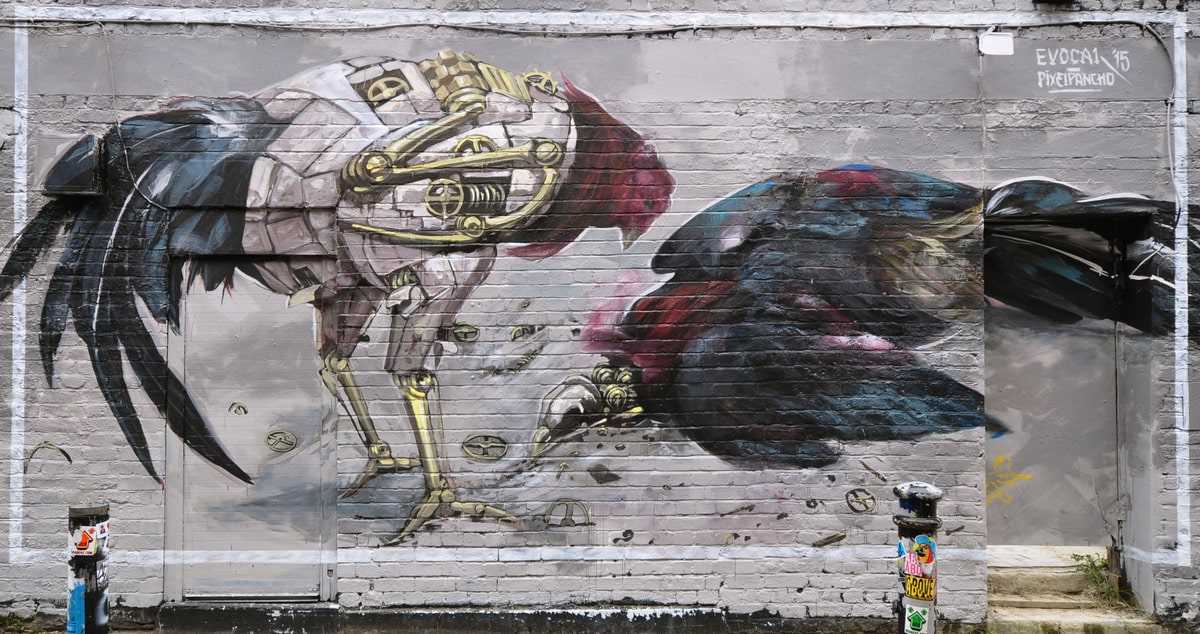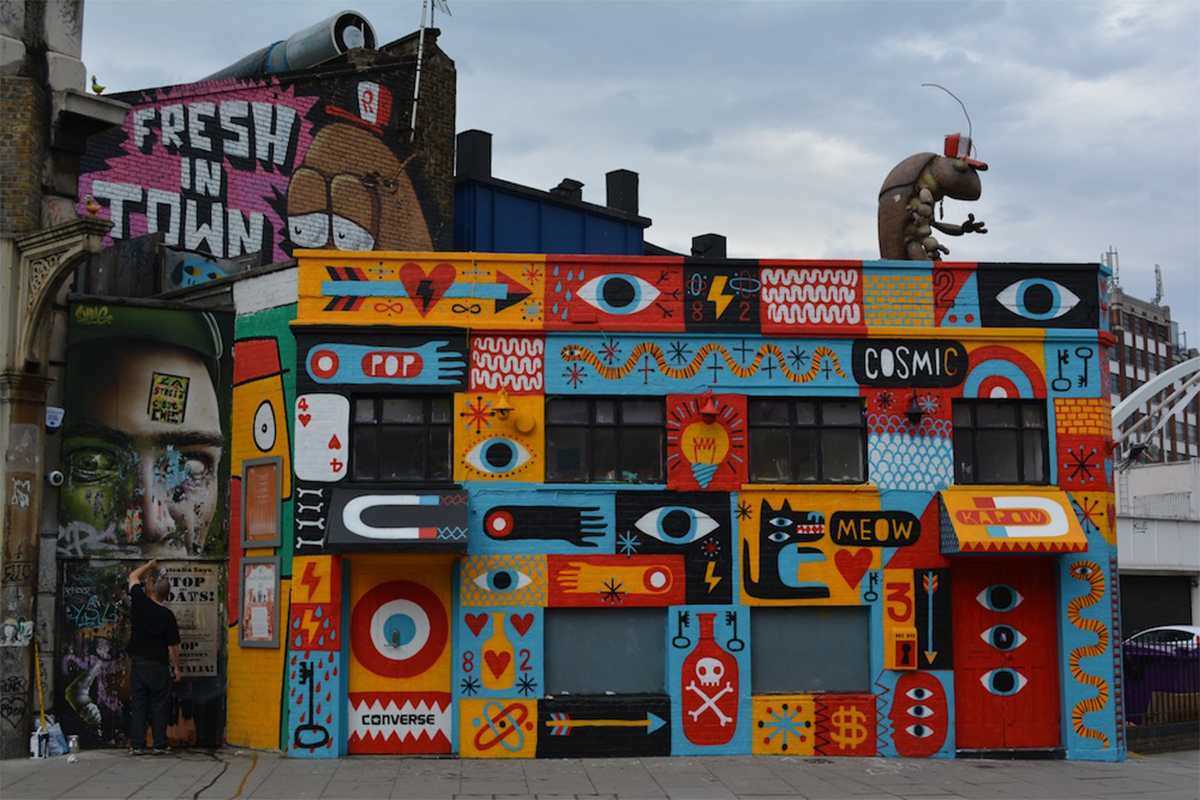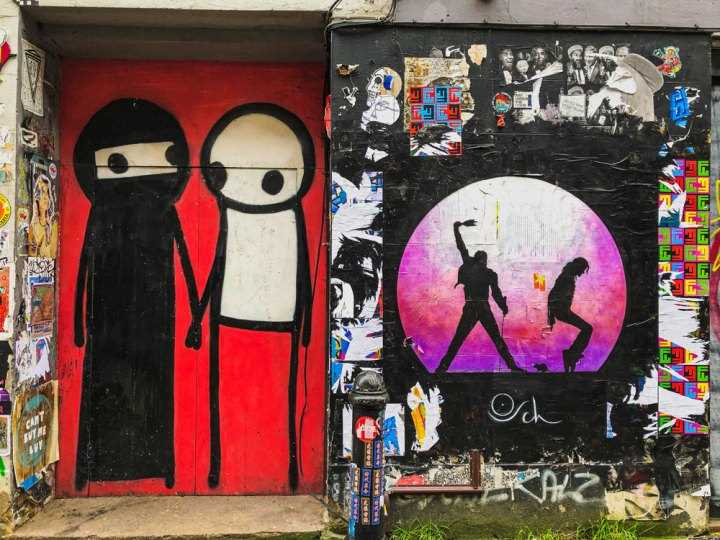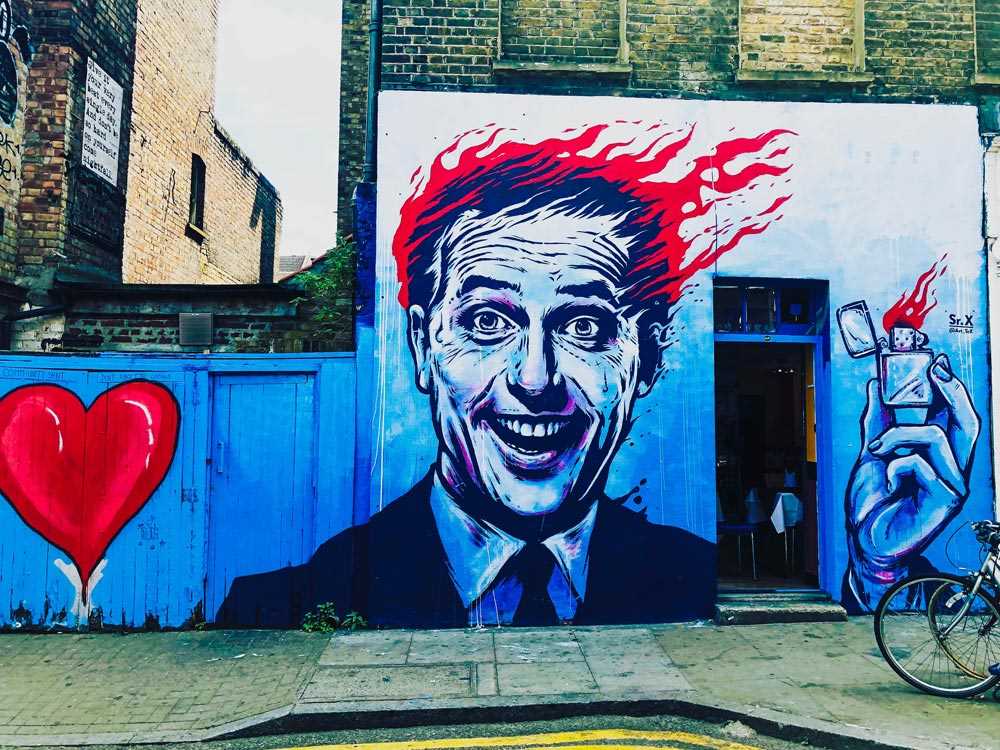
London is a city known for its rich cultural heritage and vibrant art scene. Over the years, the streets of London have become an open gallery for artists from all around the world to express their creativity through street art. From elaborate murals to thought-provoking graffiti, the city’s walls serve as a canvas for both local talents and internationally acclaimed street artists.
Walking through the streets of London, one can’t help but be captivated by the diverse range of street art that adorns the city’s walls. Each piece tells a unique story, reflecting the artist’s perspective on a wide range of social, political, and cultural issues. Whether it’s a political statement, a tribute to a cultural icon, or simply an expression of beauty, street art has the power to provoke thought and spark conversation.
The vibrant neighborhoods of London, such as Shoreditch, Camden, and Brick Lane, have become hotspots for street art enthusiasts. These streets are a treasure trove of artistic gems, where you can stumble upon hidden masterpieces around every corner. The ever-changing nature of street art means that no two visits to these neighborhoods are the same, as new artworks appear while older ones fade away.
Graffiti has long been a controversial form of artistic expression in urban landscapes, and London is no exception. The city’s vast array of graffiti tells a unique story about its people and their relationship with the urban environment.
The Evolution of Street Art
Street art has evolved from its humble beginnings as an act of rebellion to a recognized art form. Today, graffiti artists in London use the city as their canvas, transforming ordinary walls, tunnels, and bridges into captivating works of art. These artists bring color, life, and creativity to the often-drab urban landscape, creating a vibrant tapestry that reflects the diversity and energy of London.
What sets graffiti apart from other forms of art is its transient nature. Graffiti pieces come and go, as new works replace old ones, creating an ever-changing visual narrative of the city. This impermanence adds to the allure of graffiti, as viewers must actively seek out and engage with the art before it disappears.
A Reflection of Urban Culture

Graffiti serves as a reflection of the urban culture and social issues of London. Many street artists use their work as a means to comment on politics, inequality, and urbanization. Through images, symbols, and words, these artists provoke thought and challenge the status quo, prompting viewers to question the world around them.
Graffiti also gives a voice to marginalized communities, providing a platform for expression and visibility. Artists from diverse backgrounds use graffiti to reclaim their space and make their mark on the city. Within these vibrant creations, one can find messages of unity, resilience, and empowerment.
London’s graffiti scene is constantly evolving, with new artists emerging and established ones pushing the boundaries of their art. As the city continues to grow and change, so too will its graffiti, reflecting the ever-shifting urban landscape.
The Colorful World of London’s Street Art

London is a vibrant city known for its rich history and cultural diversity. One aspect of this diversity is the colorful world of street art that can be found throughout the city. From towering murals to intricate stencils, London’s streets are a canvas for artists from all over the world.
Street art has a long history in London, dating back to the early 20th century. These art forms have evolved over time, blending traditional graffiti techniques with contemporary styles. Today, London is a global hub for street art, attracting both established artists and emerging talents.
The Streets of Shoreditch
One neighborhood that stands out for its vibrant street art scene is Shoreditch. This area in East London is a haven for artists, with its colorful walls and hidden alleyways acting as a gallery space for their work. Walking through the streets of Shoreditch feels like exploring an open-air art exhibition.
The art in Shoreditch is constantly changing, with new pieces appearing overnight. Artists such as Banksy, Shepard Fairey, and Stik have left their mark on the walls of this vibrant neighborhood. Their bold, thought-provoking creations add to the charm and character of the area.
The Diversity of Styles

London’s street art scene is incredibly diverse, both in terms of styles and subject matter. From large-scale murals showcasing portraits of local heroes to intricate stencils commenting on social issues, there is something for everyone to appreciate.
The street art in London serves as a voice for the community, addressing important topics such as politics, social inequality, and the environment. It encourages dialogue and provokes thought, challenging the status quo and inviting viewers to question their surroundings.
London’s street art is not limited to walls and buildings; it can also be found on street signs, phone booths, and other unexpected surfaces. The artists use these unconventional canvases to bring their unique perspectives to the public space and engage with the city’s inhabitants on a daily basis.
The Rise of Stencil Art as a Dominant Form in London’s Street Art Scene
London’s street art scene has been flourishing in recent years, with a wide range of artistic styles and techniques on display throughout the city. One form of street art that has gained significant popularity and dominance in London is stencil art.
What is Stencil Art?
Stencil art involves the use of a stencil, typically made out of paper or cardboard, which is then sprayed over to create an image or design on a surface. This technique allows artists to quickly and easily reproduce their artwork on walls, sidewalks, and other public spaces.
Stencil art first gained prominence in the 1980s with the emergence of graffiti culture, and it has since evolved to become a respected and recognized form of street art. The use of stencils allows artists to create precise and detailed images that can be easily replicated, making it an ideal choice for street artists looking to make a bold statement in a short amount of time.
The Impact of Stencil Art in London’s Street Art Scene

The rise of stencil art in London’s street art scene has had a profound impact on the city’s cultural landscape. Stencil artists have used their work as a form of social and political commentary, addressing issues such as inequality, gentrification, and the environment.
One of the most famous stencil artists in London is Banksy, whose thought-provoking and often controversial artworks have gained international recognition. Banksy’s stencils can be seen throughout the city, challenging the status quo and sparking conversations about the role of art in public spaces.
Other stencil artists have also made their mark on London’s streets, adding to the vibrant and diverse tapestry of the city’s street art scene. Their artwork can be found in various neighborhoods, from Shoreditch to Camden, and serves as a testament to the power of stencil art as a medium for self-expression and social commentary.
Conclusion
Stencil art has emerged as a dominant form in London’s street art scene, offering artists a powerful and accessible platform for self-expression. Through the use of stencils, artists are able to create intricate and impactful images that capture the attention of passersby and inspire conversations about important social issues. As London’s street art scene continues to evolve, stencil art will undoubtedly remain a significant and influential presence in the city’s artistic landscape.
Muralists: Transforming London’s Urban Spaces with Art
Street art in London goes beyond simple graffiti tags. The city is home to a vibrant community of muralists who are transforming its urban spaces with their stunning artworks. These talented artists are using their skills to bring color, life, and creativity to the city’s walls, bridges, and buildings.
London’s muralists often have a message or story to tell through their art. Their pieces can address social issues, celebrate cultural diversity, or simply bring beauty to a dull and concrete city landscape. Each mural is a unique creation, offering a glimpse into the artist’s imagination.
One of the most famous muralists in London is Banksy, whose stencil art has captured the attention and admiration of art enthusiasts worldwide. His thought-provoking and politically charged pieces often appear overnight, surprising and delighting Londoners and visitors alike.
Another prominent muralist in London is Stik, known for his distinctive stick figure art. His large-scale murals can be found throughout the city, featuring simple yet expressive characters that evoke a sense of unity and community.
Muralists like D*Face and Jimmy C have also made their mark on London’s urban landscape. D*Face’s bold and colorful street art often incorporates pop culture references, while Jimmy C’s signature style combines vibrant, pixelated images with a technique called “drip painting.”
These muralists are not only transforming London’s physical environment but also contributing to the city’s cultural identity. Through their art, they inspire creativity, spark conversations, and encourage people to see their surroundings in a new light.
If you find yourself in London, take the time to explore its streets and discover the incredible artworks created by these talented muralists. You’ll gain a deeper appreciation for the city’s urban spaces and the power of art to transform and inspire.
Exploring the Landscape of London Through Street Art
Street art has become a prominent feature of London’s landscape, with artists from all over the world flocking to the city to leave their mark. From massive murals to small, hidden pieces, London’s streets are like a canvas waiting to be filled.
The Evolution of Street Art in London
The history of street art in London can be traced back to the graffiti scene of the 1970s, which emerged as a form of expression for marginalized communities. Over the years, street art has evolved and now encompasses a wide range of styles and techniques.
Today, London is home to some of the world’s most renowned street artists, such as Banksy, who has left his mark on the city with thought-provoking and politically charged pieces.
Exploring London’s Street Art Scene

Exploring London’s street art scene is like embarking on a treasure hunt. From the trendy streets of East London to the back alleys of Soho, there are endless pieces to discover.
One popular way to explore the city’s street art is by taking a guided tour. These tours offer a unique insight into the artists and their work, as well as the stories behind the pieces. They often lead visitors to hidden corners of the city, where a vibrant world of street art awaits.
Alternatively, visitors can embark on their own self-guided tour, armed with a map and a sense of curiosity. There is something exhilarating about stumbling upon an unexpected piece of art in the most unlikely of places.
Whether you choose to take a guided tour or explore on your own, London’s street art scene promises to be a journey of discovery. So next time you find yourself in the city, take a detour from the traditional tourist sites and immerse yourself in the vibrant world of street art.
The Storytelling Power of Murals in London
Murals have long been a powerful tool for storytelling in London. These large-scale artworks can be found adorning the sides of buildings, bridges, and even underground tunnels, captivating both locals and visitors alike. Through their vibrant colors and intricate details, these murals bring the city to life and tell stories that resonate with the people who pass by them.
Preserving History

Many murals in London serve as a reminder of the city’s rich history. They depict significant events, people, or landmarks that have shaped the metropolis into what it is today. For example, the mural on the side of the Tower of London showcases the city’s medieval past and the tales of knights and castles that once dominated the area. These murals not only add beauty to the cityscape but also educate and inspire viewers about the past.
Celebrating Culture
Murals in London also celebrate the diverse cultures and communities that call the city home. From vibrant street art in Shoreditch that pays homage to the area’s creative spirit to murals in Brixton that honor the neighborhood’s Caribbean heritage, these artworks serve as a visual representation of the city’s multiculturalism. They are a powerful expression of identity and pride in one’s roots, fostering a sense of belonging and inclusivity within the London community.
Furthermore, street artists often collaborate with local community organizations, schools, and residents to create murals that reflect the interests and aspirations of the people who live and work in a particular area. These collaborative projects not only beautify the neighborhood but also give a voice to the community, allowing them to share their stories and express their hopes for the future.
Inspiring Change

One of the most impactful aspects of murals in London is their ability to inspire change and convey social messages. Many artists use their artwork as a platform to highlight important issues such as social inequality, climate change, and human rights. For instance, the mural in the Camden area that depicts the endangered species serves as a powerful reminder of the urgent need for environmental conservation.
These murals act as catalysts for discussions and debates, pushing viewers to think critically about the world around them and motivating them to take action. By using public spaces as their canvas, street artists are able to reach a wide audience and spark conversations that have the potential to bring about positive change.
- Murals in London are not mere decorations; they are powerful storytelling tools that preserve history, celebrate culture, and inspire change.
- These artworks connect people, ignite emotions, and encourage dialogue, contributing to the vibrant and dynamic atmosphere of the city.
- As you explore the streets of London, take a moment to admire the murals that line the walls and think about the stories they tell and the impact they have on the city and its inhabitants.
Urban Art: A Reflection of London’s Cultural Identity
London has long been a city known for its vibrant and diverse culture, and its urban art scene is no exception. The streets of London are a canvas for artists from all walks of life, who use spray paint, stencils, and other mediums to express themselves and capture the essence of the city’s cultural identity.
One of the most iconic forms of urban art in London is graffiti. From the colorful murals of Shoreditch to the bold tags that can be found in every corner of the city, graffiti is an integral part of London’s urban landscape. It not only adds a unique aesthetic to the streets but also provides a platform for artists to voice their opinions and challenge societal norms.
The Importance of Diversity
London is a melting pot of cultures and ethnicities, and this diversity is reflected in its urban art. Artists from different backgrounds come together to create murals and installations that celebrate their heritage and promote inclusivity. Whether it’s a piece that showcases the rich history of Caribbean immigrants or a mural that honors London’s LGBTQ+ community, urban art acts as a visual representation of the city’s multiculturalism.
The Power of Social Commentary
Urban art in London also serves as a powerful tool for social commentary. Artists often use their work to address important issues such as inequality, gentrification, and environmental sustainability. By painting thought-provoking images and messages on the walls of the city, they spark conversations and draw attention to these pressing matters. Urban art becomes a form of activism, encouraging viewers to question the status quo and take action.
The Impact of Street Art in Shaping London’s Urban Environment
Street art has become an integral part of London’s urban landscape, playing a significant role in shaping the city’s identity and character. From its humble beginnings as an underground movement to its current prominence as a respected art form, street art has left a lasting impact on the streets of London.
The Power of Expression
Street art provides a platform for artists to express their thoughts, opinions, and experiences in a public space. By utilizing the walls and surfaces of the city as their canvas, street artists are able to share their artistic vision with a wide audience. This form of expression has the power to provoke thought, inspire change, and challenge societal norms.
Through their art, street artists can address a variety of social, political, and cultural issues that are relevant to the community. They can highlight gentrification, inequality, and environmental concerns, among other topics. By bringing these issues to the forefront, street art acts as a catalyst for meaningful conversations and encourages a critical examination of the urban environment.
An Alternative Perspective

Street art offers an alternative perspective to the established art scene, which is often confined to galleries and museums. It democratizes the art world by bringing it directly to the public, making it accessible to people from all walks of life. Street art doesn’t require an admission ticket or a dress code; it welcomes everyone to engage with the art on their own terms.
This accessibility helps to break down barriers and engage communities that may not typically engage with the traditional art world. It fosters a sense of ownership over public spaces and encourages a sense of pride and connection to the urban environment.
The Importance of Preservation
While street art is temporary and ever-changing, its impact can be long-lasting. The city of London recognizes the importance of preserving significant street art pieces, both for their artistic value and their cultural significance. Some street art works have become iconic landmarks, attracting tourists and locals alike.
Preservation efforts help to ensure that future generations can appreciate and understand the role of street art in shaping the urban environment.
Appreciating the Diverse Styles and Techniques of London’s Street Artists

London is known for its vibrant and diverse street art scene, attracting artists from all over the world. From large-scale murals to intricate stencils, the city is a canvas for creativity and self-expression.
One of the most iconic styles of street art in London is graffiti. Artists use spray paint and bold colors to create eye-catching pieces that cover walls, bridges, and even entire buildings. Graffiti artists often develop their own unique tags or signatures, marking their territory and leaving their mark on the city.
Another popular technique used by London street artists is stenciling. This involves creating stencils of different shapes and designs, which are then sprayed onto walls or other surfaces. The result is a highly detailed image that can be replicated quickly and easily. Stenciling allows artists to produce intricate pieces with precision and accuracy.
London’s street art scene is also home to many artists who specialize in wheatpasting. This involves creating artwork on paper or other materials, which is then glued or pasted onto walls. Wheatpasting allows artists to experiment with different textures and materials, adding depth and dimension to their pieces.
London’s street art is not just limited to paint and paste; artists also use other techniques, such as mosaic art. Mosaic murals can be found throughout the city, created using small, colored tiles or pieces of glass. These vibrant and intricate artworks add a unique touch to London’s street art landscape.
From abstract pieces to political statements, London’s street art scene is a melting pot of different styles and techniques. Each artist brings their own unique vision and perspective to the streets, contributing to the city’s vibrant and ever-evolving art scene.
Next time you walk through the streets of London, take a moment to appreciate the diverse styles and techniques of the city’s street artists. Their creativity and passion are on display for all to see, turning the urban landscape into a visually stunning gallery of art.

I am a mural enthusiast and a fervent admirer of street art. Rather than creating murals myself, I am passionate about collecting them. My love for street art knows no bounds. I am dedicated to curating and cherishing these artworks that grace the streets. My collection stands as a testament to my profound appreciation for this form of artistic expression.
read about me



